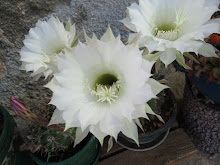 Summer is here bringing us a lot of happiness thanks to fresh fruits and vegetables which is more and more present on our markets and piazzas. Shelves are full of red tomatoes, green and yellow paprika, melon and watermelons. This summer rhapsody is enriched with one, very important vegetable – chili peppers. Hot chili peppers are originally from
Summer is here bringing us a lot of happiness thanks to fresh fruits and vegetables which is more and more present on our markets and piazzas. Shelves are full of red tomatoes, green and yellow paprika, melon and watermelons. This summer rhapsody is enriched with one, very important vegetable – chili peppers. Hot chili peppers are originally from You can use peppers as a fresh vegetables, in powder (spice – hot chili peppers) or conserved. Dried and milled peppers is the most common way we’ll find chili, and that powder can offer us a lots of minerals and vitamins such as iron, magnesium, calcium, vitamins A, C, K and other important elements (I don’t want to state exact numbers, because different sources provide different data).
Very important ingredient in chili peppers is capsaicin – substance which is “to blame” for their pique, but routine about peppers being the “on duty disinfectants” is not correct. Chili peppers are indeed healthy, and there are sources stating that capsaicin helps with various combustions and it helps discrimination of blocked nose and lungs.
Chilis can decrease cholesterol level in blood and they help in degrading of fibrin – compound which is involved in making blood clots. Using hot peppers (also as a spice) in our every day cuisine can prevent stroke and heart attack. Capsaicin reduces cholesterol oxidation which is a great help against cardio vascular diseases.
In magazine “Cancer research” it is stated that capsaicin helps in stopping growth of cancer cells in prostate and lever cancer.
Some say that exasperation can cause ulcer is not the truth – chili peppers stimulate discrimination of protective stomach juices.
Chili helps in body weight regulation because pique in peppers increases metabolic activity and oxygen usage – until 20 minutes after consummation.
Capsaicin has its’ roll in today’s cosmetics as a cream addition which tenders pain caused with neuralgias, herpes zoster or even after amputation.
Too much of everything can be bad so if you consume large amounts of chili, it can cause stomach cancer.
But for me, this is not the reason why I shouldn’t continue enjoying this “sweet” pique which is offered to us in the summertime because summer is too short, anyway…

4 comments :
One more fantastique plant to grow for looks and mainly to lend zest and piquancy to the food. Naturally as you write it is also good for many other uses and to keep us healthy. I plant two varieties. A longish one of which I dont know the name and Jalapeno chilies i love to make chili jam. do you know the pretty chili called "scots bonnet" it is very hot. Chili leaves are used and cooked in Filipino- Korean- and Japanese cuisine. Have you planted chilies in your garden?
Hello Titania!
Thank you very much for your comment and yes, I have planted chili peppers in ma garden and at the moment I'm enjoying their "fruit" :-). I looked for "scots bonnet",but I've never seen them in Croatia - not in anyone's garden I know, or on the market. We usually prepare conserved peppers (in vinegar) or we add chilies to different side dishes like "ajvar" or "pinđur"...
Hi Sandra,
It's been a while since I've visited your blog(s) since I was on vacation in Turkey. I loved the Chili post. I am always looking to see what health benefits each vegetable or fruit has so we can consume them. Chili as you described is known for fighting against a lot of diseases/sicknesses, I just wish it wasn't so hot! :)
good, organic food
Thank's
http://bali-travel-tourism.blogspot.com
Post a Comment